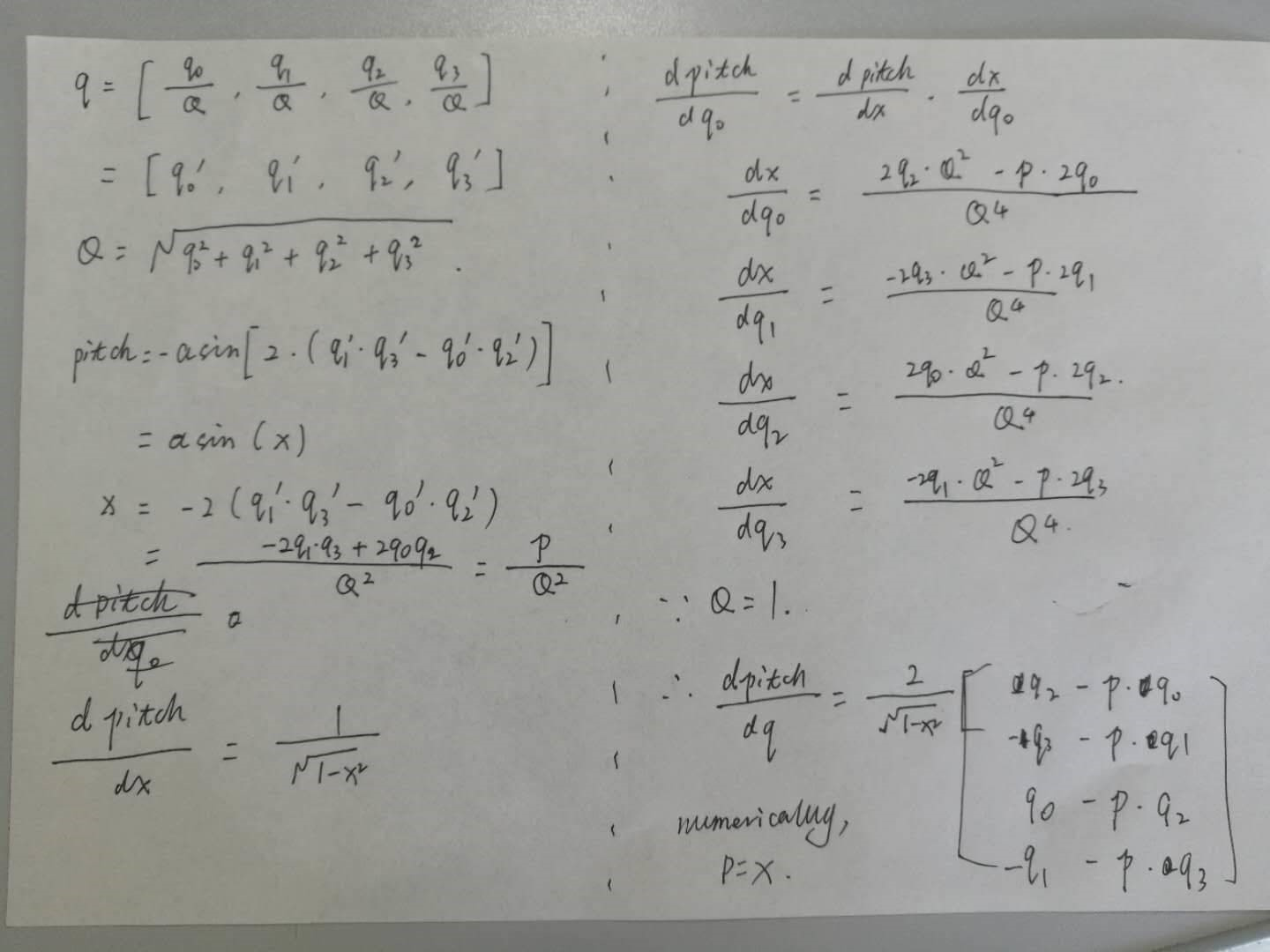Hello
I intend to use IMU300ZI in our omnidirectional robot (can turn all 4 wheels into arbitrary but the same direction). The robot has speed encoder and wheel angle encoder so I want to use this info in EKF. As a base code I use your INS example project.
I studied your code and think that the best place for wheel angle incorporation is in function Update_PseudoMeasurement() in UpdateFunctions.c. Instead of using frontVelMea variable as scalar I would make it vector the values of wich would be set based on current wheel angle, wheel speed and gKalmanFilter.ppsEulerAngles[YAW]. I would also set gAlgorithm.velocityAlwaysAlongBodyX=FALSE.
Odometer data would be received over SPI.
Do you think this is correct solution or is there anything important I forgot about which could cause failure?
Thank you
Regards
Pavel


